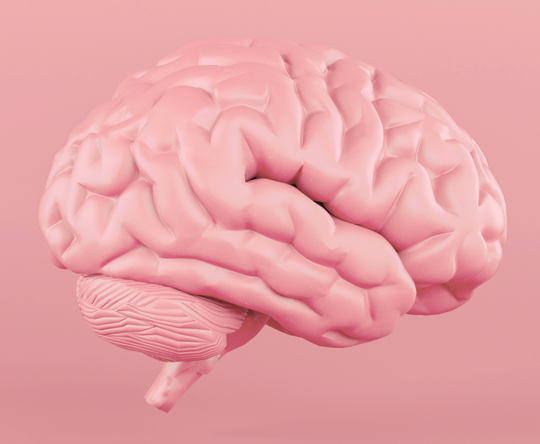Double vision can occur in one or both eyes, be it temporarily or permanently. These are the disorders that can cause it
The eye muscles can move day and night without rest, the eye muscle is the fastest and most hardworking muscle in the body. It is estimated that our eye blinks approximately 5.2 million times each year as long as we live. We receive as much as 90 percent of information from our environment through our eyes.
The World Health Organization estimates that out of the 2.2 billion people suffering from eye diseases worldwide, for at least a billion of them the disease could have been prevented. Apart from aging and genetic predispositions, eye health is influenced by many other factors we have control over ourselves, thus preventing disease and improving our health. This is why ophthalmologists, neurologists, endocrinologists, psychiatrists, rheumatologists, otorhinolaryngologists, plastic surgeons, general practitioners, pharmacists and engineers are brought together at X-Lab — the expert research hub by JGL — to analyse the latest research and, by applying a holistic approach, to share with us how to take care of our eye health and why that is important for our whole bodies.
The eye is connected to the central and autonomic nervous systems via neuromuscular structures in the ocular cavity as well as the entire visual pathway. Therefore, many neurological disorders may show ophthalmic symptoms. What symptoms should you pay special attention to? For X-Lab, the expert research hub by JGL, all this is analysed in detail by neurologist Professor Marija Bošnjak Pašić, MD, PhD.
1 What are the symptoms of neurological disorders manifested in the eyes?
Ophthalmology and neurology cross paths in various ways since the eye as an organ of vision is connected to the brain via neuromuscular structures in the ocular cavity as well as the entire visual pathway, i.e., the central and autonomic nervous system. Therefore, a number of neurological disorders resulting from damage or irritation of these neuromuscular structures in the eye cavity can – in addition to clinical neurological manifestations and symptoms – also result in ophthalmic manifestations of a disease.
• Cerebrovascular disorders
The most common ones are cerebrovascular disorders that can present as visual impairment depending on the type of loss in the visual field, short-term transient blurred vision, vision loss in one or both eyes, transient double vision, visual hallucinations, optical agnosia, disorders affecting eyeball movement, all of which may be caused by changes in blood vessels.
• Headaches
Headaches are one of the most common neurological symptoms, they can be caused by trauma, vascular disorders, inflammatory disorders and tumours of the central nervous system. The most common type of headache that is very often associated with visual manifestations is migraine (in the form of distorted images, flashes in the visual field, sectoral loss in the visual field, complete transient loss of vision or damage affecting eye movement and periocular pain).
• Tumours
Brain tumours (benign or malignant), brain lymphomas and tumour-related processes of the pituitary gland or the optic nerve itself can also cause visual disturbances depending on where this process is localised (visual field loss, eyeball protrusion, papilledema).
• Inflammatory and other disorders
Inflammatory disorders of the brain – nerves or muscles, metabolic disorders, endocrine disorders, autoimmune demyelinating disorders, degenerative disorders of the central nervous system, disorders caused by nutrient deficiencies or exposure to toxins – may manifest as photophobia, blurred vision, impaired vision or complete loss of vision, impaired eyeball movement, impaired colour perception, anisocoria (unequal pupil size) or eyeball protrusion.
• Neuromuscular disorders
Neuromuscular disorders, the most significant of which is myasthenia gravis, can present as ophthalmic manifestations (double vision, drooping eyelids).
• Trauma
Traumatic damage to the brain and meninges – ranging from concussions to subdural and epidural bleeding or brain contusion and cerebral oedema – can cause ocular manifestations (impaired vision, narrowing of the visual field, unequal pupil size).
• Epilepsy
Some types of epilepsy may be associated with ocular manifestations, e.g. visual impairment as a precursor to epileptic seizures; photostimulation may affect the propagation of an epileptic seizure, while post-convulsive seizures may be a transient or permanent side effect.
• Intoxications
In case of certain substances associated with impaired consciousness or other neurological disorders, changes in the pupils (miosis, mydriasis) or various visual disturbances may be pronounced.
• Other disorders of the nervous system
A very common symptom is blepharospasm – it is manifested by involuntary twitches or movements or spasms of the muscles of the upper or sometimes lower eyelid. Minor eyelid twitching is often harmless and associated with daily activities such as fatigue, stress, excessive consumption of caffeine, alcohol or smoking, as well as sensitivity to light. This is sometimes associated with taking certain medications or with disorders of the central nervous system, which includes Parkinson’s disease, multiple sclerosis, Bell’s palsy, Tourette’s syndrome, dystonia.
2 What can double vision indicate?
Diplopia refers to a disorder when a person sees two objects instead of one. It can occur in one or both eyes. This condition can be temporary or permanent.
In addition to eye disorders that can cause diplopia, there are a number of other disorders that can present as diplopia – thyroid disorders, neurological disorders that cause paresis of the cranial nerves that move the eyeballs (third, fourth and sixth cranial nerves). The most common are cerebrovascular or demyelinating disorders of the central nervous system (primarily multiple sclerosis) or neuromuscular disorders (myasthenia gravis).
In order to diagnose this disorder, it is necessary for ophthalmologists and neurologists to examine eye motility, and it is also often necessary to do additional ophthalmological and neuroradiological treatments, which include a brain MRI.
3 When is a headache associated with an eye problem?
Headaches due to cerebrovascular disorders, tumours related to the brain and brain structures, false tumours, brain trauma and inflammation of the brain can also present as vision loss. The most common headache that is very often associated with visual manifestations is migraine.
4 How to spot symptoms in time and when to see a neurologist because of eye symptoms?
In case of any changes in vision – transient or permanent loss of vision, transient or permanent sectoral loss in the vision field (half loss, quarter loss or peripheral vision loss), decreased visual acuity, blurred vision, colour blindness, double vision, pain in the eye cavity, disorders affecting eyeball movement – you should see an ophthalmologist and neurologist in order to determine the cause and do any necessary treatments.
5 Who are neuro-ophthalmologists?
Neuro-ophthalmologists are most often ophthalmologists who subspecialise in neuro- ophthalmological disorders, i.e., visual symptoms resulting from disorders of the central nervous system (disorders of the brain and optic nerve, as well as other nerves that move the eyeball (third, fourth and sixth cranial nerves) and eyeball muscles.
Visual symptoms can be divided into vision loss or impaired eye movement. Vision loss can occur due to problems within the optic nerve or its connections to the visual parts of the brain.
Diagnosis is done through detailed questions about the patient’s symptoms, an examination of the visual system that includes checking visual acuity and the visual field, an ophthalmoscopy, examining eye motility and the eyelids and pupils, and examining other cranial nerves. It is important to note that the optic nerve (the second cranial nerve) is part of the central nervous system and only by examining the ocular background can we have direct insight into the central nervous system. Neuro-ophthalmologists often consult with a neurologist, and it is usually necessary to perform one of the neurophysiological (VEP test) or neuroradiological examinations (CT or MR) in order to obtain an accurate diagnosis and find the appropriate treatment.
6 How to keep your whole body as healthy as possible?
A varied healthy and balanced diet, drinking lots of water, avoiding smoking, alcohol, and other addictive substances, getting enough rest, regular physical activity, surrounding yourself with positive people and positive thinking, avoiding stress … Sometimes that’s all too easy to advise, but difficult to actually apply.
QUIZ
SUFFERING FROM DRY EYE SYNDROME? ANSWER THESE QUESTIONS AND FIND OUT HOW TO PREVENT IT AND WHAT TO DO WHEN YOU ARE ALREADY FEELING THE SYMPTOMS
QUIZ





